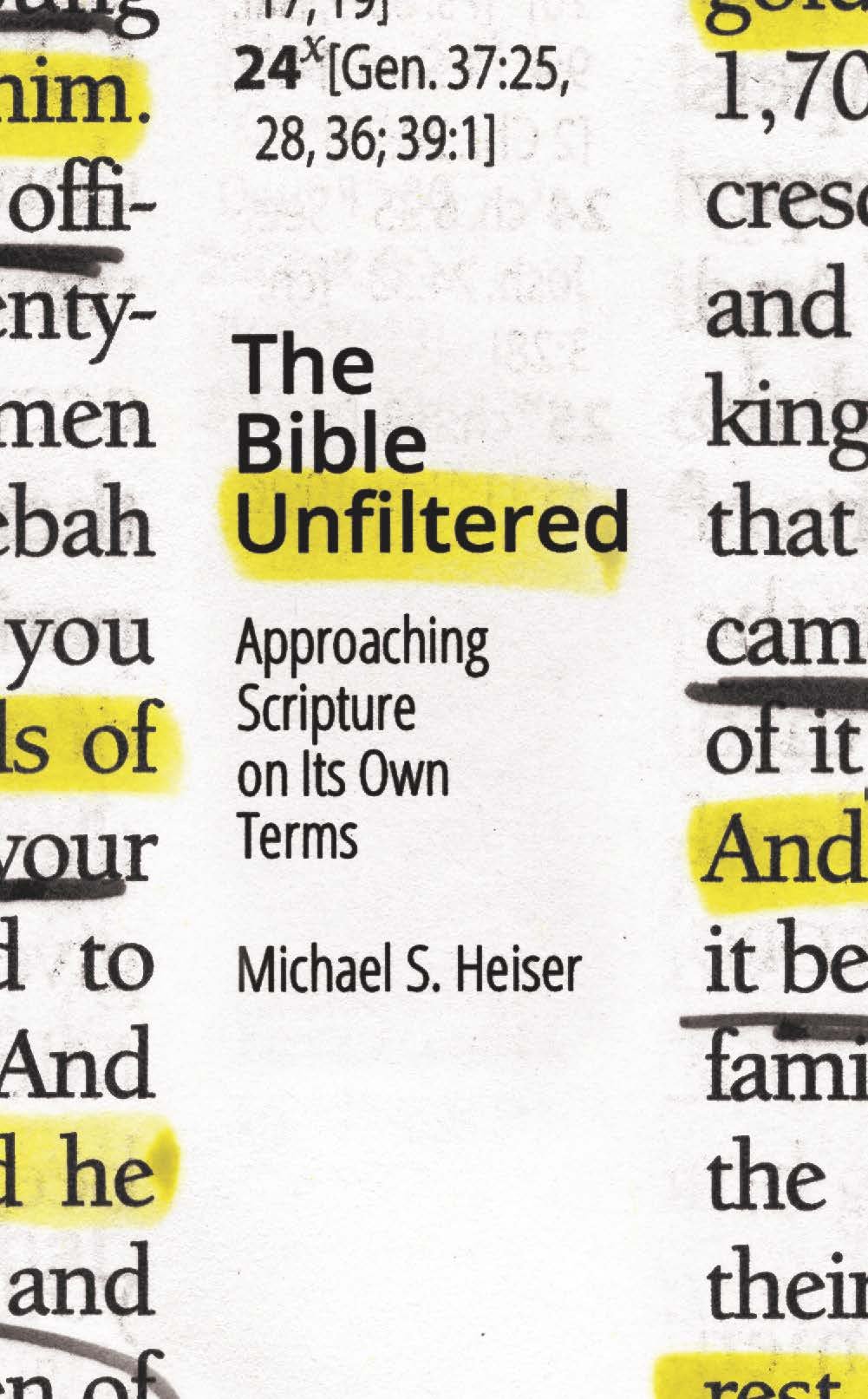Heiser, Michael. Demons. Lexham Press.
I’ve been preparing this review for about 4 years. True, Heiser’s book has only been out around a year or so, but I knew he would write this book and I wanted to be ready. He does not disappoint. It is the only book of its kind. There are evangelical texts analyzing what the Bible teaches on demons, but they either repeat cliches or only engage with a surface level reading of the text. Unger’s is good, but he doesn’t get to the heart of the matter. Clinton Arnold’s work is fantastic, but only focused on the New Testament. Heiser’s is one of the first that deal with the best of critical scholarship, yet from an evangelical standpoint.
Demons and the Dead
Early OT language about the demonic overlaps with terms used for the realm of the dead. The key concept is that of the Rephaim. The Rephaim could be giants or shades of the dead (1 Chr. 20:4; Isa. 26:14; Job 26:5). At least at death they are seen as “supernatural residents of the underworld” (Heiser, loc. Cit. 345). They were part of the giant clans specifically targeted by Moses and Joshua (Deut. 3:11, 13; Josh. 12:4; 13:12). They are linked to the Anakim (Deut. 2:10-11). The Anakim, as you no doubt remember, descended from the Nephilim (Num. 13:33; Gen. 6:4).
Heiser later does linguistic analyses on “Spirits,” the ob, obot, oberim; “those who have passed over.” While there are locations such as Oboth and Abarim in the Transjordan, a tantalizing clue is given in Ezekiel 39:11, The Valley of the Travellers.” Archeology has shown the remains of megalithic minutes referring to the dead and the underworld.
Knowing one: Deut. 18:9-14 condemns sorcery, which is no surprise. One practice would have been “utilizing the services of so’el ob we-yiddeoni” (440). Lev. 19:31 links these knowing ones with the spirits of the oboth (side point: the KJV is actually a better translation on this one).
Azazel. One reason Azazel simply can’t be the goat offered in Leviticus 16 is that a goat is offered for Yahweh and another for Azazel. Leviticus 17 gives a bit more information, as it mentions “goat demons.” The key point is not that a sacrifice is being offered to a goat demon. Rather, the sins of Israel are being banished outside of the holy realm.
Original Rebel
This is largely a recap from his earlier works dealing with the passages in Isaiah and Ezekiel. He acknowledges that the passages originally address a human king. The point, though, is that the prophet’s speech draws upon elements of a primeval rebellion. Yes, he is talking to the king of Tyre/Babylon, but no one seriously believes the king of Tyre was in the garden of Eden at the beginning of time.
Some say it refers neither to angel nor king, but to Adam in the garden. There are some weaknesses to that approach. For one, Adam doesn’t appear anywhere in the texts. Further, as Heiser notes, we would have to presume “things about Adam that are not in the Genesis episode of the fall” (loc. 1497). Nor do we have any evidence that Adam ever served in the divine council or fancied himself a god.
As to the figure being thrown down to “earth,” Heiser notes places where eretz can mean the underworld (Jonah 2:6) “where ancient warrior-kings await their comrades in death” (Ezek. 32.21, 24-3o). The divine rebel was sent to the realm of the dead, the underworld.
Satan in Second Temple Judaism
Interestingly enough, Azazel in 1 Enoch functions as the Satan figure. The OT really didn’t make an overt identification between the Serpent and Satan. The Serpent was seen as God’s arch-enemy, but as satan was more of a common noun, few made the connection. This connection, however, is clearly seen by the time of the NT writers.
On the other hand, Azazel could function as the leader of the Watchers (Gen. 6:1-4; 1 En. 8:1). On the other hand, Azazel is the tenth fallen angel listed, so he probably isn’t the leader.
While the name Belial never refers to a personal being in the OT, it clearly does in the NT. How would NT writers and readers have made the connection? They did so by means of the intertestamental worldview (Martyr. Is. 2.4; 4.2, etc). By the time of the NT Belial is more or less the same as “Satan.”
Demons in Second Temple Judaism
This chapter summarizes largely technical concepts and reception of texts like 1 Enoch in the intertestamental period. The one new point that I noticed was his reference to the 3rd century African bishop Commodianus (ch. 3) who linked “the disembodied existence of the giants after their death” to the existence of demons. Does the Bible, though, say this? Not directly, but it does give a hint that any early reader would have seen. The Rephaim lived in the underworld and were the spirits of warrior-kings.
Third Divine Rebellion: Chaos in the Nations
As in his earlier works, he links the Tower of Babel incident with the “Deuteronomy 32 worldview.” I won’t repeat the arguments here. One question that always comes up with his take on Psalm 82 is “when” did this happen? When did God decide to judge the corrupt elohim? The Bible doesn’t directly say.
Cosmic Geography
Deut. 32:9 says Israel is Yahweh’s portion and “his allotted heritage.” With reference to Azazel, deserts are often thought to be the realm of demons (something the early church echoed). When David has to leave Israel, he says he has been “driven away from the inheritance of Yahweh” (1 Sam. 26:19).
Daniel 10:13, 20 gives the clearest, if briefest reference to cosmic geography.
The Devil and His Angels
If the Hebrew term shaitan was ambiguous, the Greek term Satanos is not. It clearly refers to the arch-rebel. It is interesting, however, that “Beelzebub,” the god of Ekron (2 Kgs 1:2-3) is now identified with Satanos. On the other hand, the lemma ba’al in the name could refer back to a more generic Hebrew reading, meaning prince on high, referring to Satan’s leadership.
It is not arbitrary that the devil tempts Jesus in the wilderness, as that is the home of Azazel and Lillith.
What is a demon?
One problem is that we think we already know what this term means. The fact that we don’t connect biblical dots and that we get our theology from post-Catholic pop culture only makes it worse. This lets Jungian gnostics and others reinterpret demon as “dark psyche” within all of us. And if you get your theology from pop culture, it’s hard to argue with them.
A demon is an evil spirit (Matt. 8:31). It’s also called “an unclean spirit.” Note that it is not called a fallen angel. Unclean spirit is far more precise and calls the reader back to how “clean/unclean” functioned in a biblical worldview. Something is unclean when it is an unnatural mixture and/or was in contact with dead corpses (hint: Nephilim).
The Ruling Powers
Paul’s language of “rulers, principalities, powers, dominions, thrones, world rulers” echoes the Deuteronomy 32 worldview. These are geographical terms. While they sometimes denote physical rulers, Ephesians 6:12, linking them to heavenly places, makes that impossible here.
Application
Heiser correctly notes that a Christian can’t be “possessed” by a demon. He also points out that possession is the wrong word, in any case. He also rebuts the Peter Wagner school of Strategic Level Warfare Ministry. Wagner correctly notes that the bible speaks of cosmic geography. The problem is that the NT authors never seem interested in casting out lieutenant demons before getting to the generals.
I agree with Heiser that the NT never lists exorcism as a weapon to use; the fact of the matter is that the NT does use it. But in any case, neither Heiser nor I would sanction the bizarre types of exorcism seen in Roman Catholic culture. The best antidote to demonic activity is simply spiritual hygiene.
Some Criticisms
While the book is easily the best of its kind, it does run into a few difficulties. There is a lot of repetition in this book, both from his earlier works and from within this work. Some of that can’t be helped. He assumes–with reason–that not all readers will have been familiar with his earlier works. That said, if you have read his earlier works then you more or less know the arguments relating to Enoch, apkallu, and the like.
That’s not to say there is no new material in the book. There is, and it is good.

